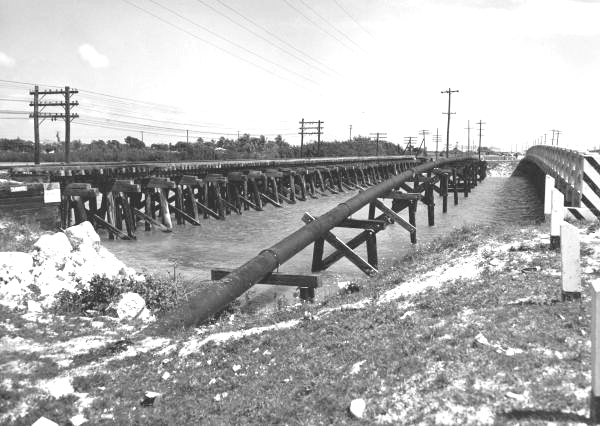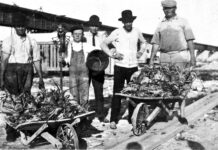One of the challenges to living on these islands, both for the Indians who predated Christopher Columbus’ arrival to the New World and the early pioneers who once farmed here, was potable water. The first people relied on the natural springs that once dotted the island chain. The early pioneers built cisterns to collect and store rainwater. Today we simply turn a handle and water from the Biscayne Aquifer flows. It is considered some of the highest quality groundwater available in the United States.
An aquifer is defined by Merriam-Webster as “a water-bearing stratum of permeable rock, sand, or gravel.” The Biscayne Aquifer consists largely of highly porous limestone and was named for its proximity to Biscayne Bay. The underground water source flows beneath portions of Monroe, Dade, Broward, and Palm Beach counties and reaches depths of up to 240 feet below sea level.
The Florida Keys Aqueduct Commission was formed in 1937. When the U.S. Navy required more freshwater than it could manufacture at its base in Key West, they joined forces with the FKAC to build a pipeline. They also acquired 353 acres of pine rockland west of Florida City on which to create the wellfield and necessary facilities to bring the water to the surface and pump it down the Keys. To reach Key West, 130 miles of 18-inch pipe was laid in trenches, underwater, or attached to automobile bridges connecting the islands. The Navy paid two-thirds of the extensive bill and the FKAC one-third.
When the project was completed, the first water to pour down the pipeline reached Key West on September 22, 1942. Over the years improvements have been made including booster pumping stations created on Key Largo, Long Key, in Marathon, Ramrod Key, and Stock Island. The pipes, too, have grown in size over the years, at least some of them. From the wellfield the pipeline measures 36 inches. By the time it reaches Key West, the pipeline is still 18 inches.
Today the facility operates under the Florida Keys Aqueduct Authority and is responsible for 1,086 miles of pipes that cross 45 bridges to supply the Florida Keys with 17 million gallons of water every day. To appreciate the magnitude of the FKAA operation, keep in mind that it takes approximately 10 days for a drop of water to travel through the system of pipes all the way to Key West.
Brad Bertelli is curator of the Keys History & Discovery Center.


























